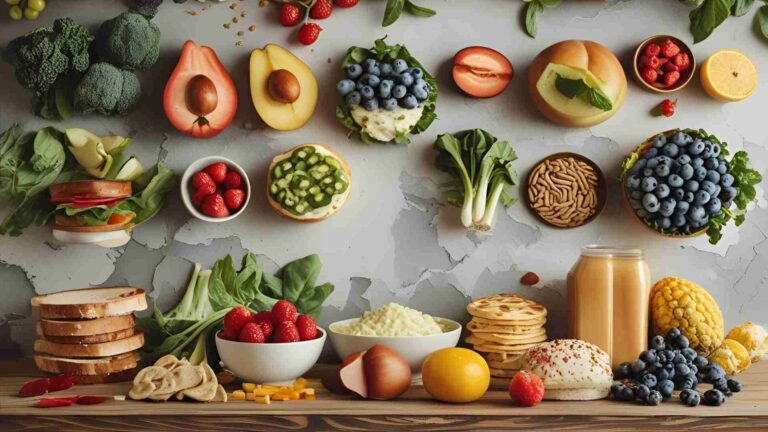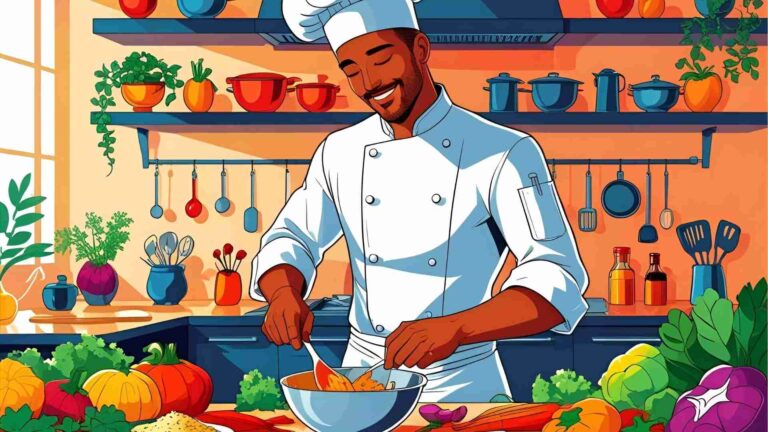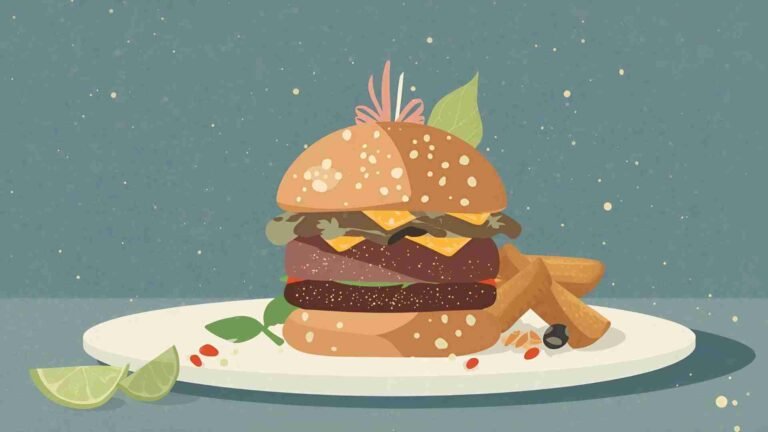How content marketing can succeed in the food industry
Learn how content marketing drives success in the food industry with strategies like recipes, videos, and storytelling to boost brand loyalty and sales.
The food industry thrives on connection, emotion, and sensory experiences. Content marketing is the bridge that links brands to consumers, turning casual browsers into loyal customers. Unlike traditional advertising, which pushes products, content marketing pulls audiences in with value-driven, engaging material—recipes, stories, videos, and more. With the global content marketing market exceeding $100 billion and the U.S. food market projected to reach $875.78 billion by 2025 (Statista), a strategic approach to content is not just a trend—it’s a necessity for food businesses aiming to stand out.
This article explores how content marketing transforms the food industry, offering actionable strategies, real-world examples, and insights into creating compelling content that resonates with audiences. From building brand identity to driving sales, here’s how to make content marketing work for your food business.
Why Content Marketing Matters in the Food Industry
Food is more than sustenance—it’s culture, emotion, and experience. Content marketing taps into these elements by delivering stories, visuals, and information that inspire action. Whether you’re a CPG brand, a restaurant, or a meal kit service, content marketing offers multiple benefits:
- Brand Identity: Establishes a unique voice and fosters community.
- Consumer Influence: Shapes purchasing decisions through inspiration and education.
- Engagement: Encourages interaction with recipes, tips, and stories.
- Awareness: Boosts visibility through SEO-optimized content.
- Lead Generation: Drives actions like sign-ups, demos, or purchases.
The competition in food marketing is fierce, spanning grocery delivery, gourmet products, snacks, and dining experiences. To rise above, brands must deliver tailored, authentic content that resonates with their audience.
Core Elements of Food Content Marketing
Effective content marketing in the food industry revolves around delivering value while showcasing products subtly. Here are the key components:
1. Building a Unique Brand Identity
Content marketing crafts a brand’s personality, making it relatable and memorable. For example, a vegan snack brand might share stories of sustainable sourcing, while a fast-food chain could use humor to connect with younger audiences. A consistent voice across blogs, social media, and videos builds trust and fosters a sense of community.
2. Influencing Purchasing Decisions
Content that educates or inspires—such as meal prep tips or nutritional guides—directly impacts consumer choices. For instance, a recipe featuring a specific ingredient can nudge customers toward purchasing it. According to the Food Content Marketing Report, informational content like recipes and how-tos ranks among the most effective for driving sales.
3. Driving Engagement
Engaging content sparks interaction. Recipes, cooking tutorials, and behind-the-scenes stories invite audiences to comment, share, and participate. Platforms like Instagram and TikTok amplify this engagement with visually appealing posts and short-form videos.
4. Increasing Brand Awareness
High-quality, SEO-optimized content elevates a brand’s visibility. For example, a blog post titled “10 Easy Weeknight Dinners with Pantry Staples” can rank well on Google, drawing organic traffic. Establishing thought leadership through educational content further solidifies a brand’s authority.
5. Generating Leads
Content marketing funnels audiences toward actions like signing up for newsletters, downloading recipe eBooks, or requesting product demos. For B2B food businesses, whitepapers or case studies can attract supply chain managers or R&D teams.
Content Ideas That Resonate
The food industry offers endless opportunities for creative content. Here are proven formats that drive results:
| Content Type | Description | Example Use Case |
|---|---|---|
| Recipes | Showcase products in actionable, delicious recipes. | A pasta brand shares a 15-minute carbonara recipe. |
| Cooking Tips | Offer practical advice on techniques, ingredients, or tools. | Tips for selecting ripe avocados. |
| Behind-the-Scenes | Share stories about sourcing, production, or team culture. | A coffee brand profiles its farmers. |
| Food Photography/Videos | Create visually stunning content to highlight dishes or products. | A bakery posts a Reel of a cake being decorated. |
| Customer Testimonials | Highlight positive customer experiences to build trust. | A meal kit service shares user success stories. |
| Educational Content | Explain trends, nutrition, or product science. | A superfood brand discusses quinoa benefits. |
| User-Generated Content | Encourage customers to share their creations with your products. | A hashtag campaign for meal photos. |
| Special Offers | Promote exclusive deals via email or social media. | A limited-time discount on a new product line. |
Chart: Content Marketing Workflow

This workflow ensures content is audience-focused, optimized, and continuously improved based on performance metrics.
Channels for Food Content Marketing
Choosing the right platforms maximizes reach and engagement. Here’s how to leverage key channels:
1. Blogs
Blogs are ideal for long-form content like recipes, guides, or trend analyses. Optimize posts with keywords like “quick dinner recipes” to capture search traffic. For example, Whole Foods’ blog features recipes that subtly promote their ingredients.
2. Social Media
Platforms like Instagram, TikTok, and Pinterest thrive on visual content. High-quality food photography, short recipe videos, or Reels showcasing product use can go viral. Ben & Jerry’s uses Instagram to blend product launches with advocacy, creating a loyal following.
3. Email Marketing
Personalized emails with recipe roundups, exclusive offers, or product updates keep audiences engaged. Segment lists to target specific groups, like health-conscious eaters or busy parents.
4. Video Content
Videos dominate food marketing. YouTube searches for “how to cook” are among the platform’s top queries, and BuzzFeed’s Tasty has over 100 million Facebook followers. Create tutorials, product demos, or brand stories to captivate viewers.
Real-World Examples of Food Content Marketing
These brands showcase how strategic content marketing drives success:
| Brand | Strategy | Impact |
|---|---|---|
| Blue Apron | Encourages user-generated content with #LetsBlueApron hashtag. | Builds community and increases social media reach. |
| Whole Foods Market | Features recipes on its homepage, tying them to in-store ingredients. | Drives in-store purchases through inspiration. |
| Ben & Jerry’s | Shares value-driven stories alongside product launches on social media. | Strengthens brand loyalty with authentic storytelling. |
| Kashi | Highlights farmer stories to emphasize sustainability. | Builds trust through transparency. |
| Stubb’s BBQ | Offers grilling tips via Amazon Alexa’s “Ask Stubb” skill. | Engages tech-savvy audiences with innovative content delivery. |
These examples illustrate how content can align with brand values, engage audiences, and drive measurable results.
Strategies to Elevate Food Content Marketing
To compete in the crowded food industry, brands must refine their approach. Here are 10 strategies to maximize impact:
- Plan a Content Calendar: Schedule consistent posts to maintain audience interest. Align with seasonal trends, like holiday recipes or summer grilling guides.
- Invest in Professional Visuals: High-quality photography and videos are non-negotiable. A single stunning image can outperform text-heavy posts.
- Tell Authentic Stories: Share real narratives about your team, suppliers, or customers to build trust.
- Focus on Top Platforms: Prioritize platforms where your audience is active, like Instagram for millennials or Pinterest for home cooks.
- Collaborate with Influencers: Partner with niche food influencers for authentic content that resonates.
- Highlight Sustainability: Showcase ethical sourcing or eco-friendly practices to appeal to conscious consumers.
- Create Educational Content: Offer value through pairing tips, nutrition facts, or cooking hacks.
- Leverage Seasonal Trends: Drop timely content, like pumpkin spice recipes in fall or BBQ tips in summer.
- Feature User-Generated Content: Amplify customer posts to boost credibility and engagement.
- Track Performance: Use analytics to measure engagement, conversions, and reach, then refine your strategy.
Chart: Content Performance Metrics

Tracking these metrics ensures content aligns with business goals.
B2B vs. B2C Food Content Marketing
B2B Food Content Marketing
B2B content targets industry professionals like supply chain managers or R&D teams. Focus on:
- Market Data: Share trends, like plant-based ingredient demand.
- Case Studies: Highlight successful partnerships or product applications.
- Whitepapers: Offer in-depth analyses of industry challenges.
Keep content factual, data-driven, and solution-focused. Use a consumer intelligence platform to pull relevant insights.
B2C Food Content Marketing
B2C content is visual, relatable, and snackable. Prioritize:
- Videos/Reels: Show products in action, like a smoothie being blended.
- Relatable Tone: Match your brand’s personality—playful, wholesome, or bold.
- Real-Life Scenarios: Feature products in everyday settings, like family dinners.
B2C thrives on emotional connections and stunning visuals.
Creating the Best Food Content Marketing
To craft standout content, follow these steps:
- Know Your Audience: Use tools like Tastewise to analyze what your audience cooks, buys, or watches.
- Combine Design and Value: Pair beautiful visuals with practical content like recipes or hacks.
- Mix Formats: Use blogs, videos, emails, and infographics to reach diverse audiences.
- Tap into Trends: Leverage consumer intelligence platforms to stay ahead of food trends.
- Stay Authentic: Share your brand’s story—its people, process, and values.
- Work with Influencers: Let influencers create natural, engaging content.
- Track and Improve: Use analytics to refine underperforming content.
The Power of Visuals in Food Content
Visuals are the heart of food marketing. A single image of a sizzling steak or a vibrant salad can spark cravings. Instagram and TikTok are visual-first platforms, making professional photography and videography critical. For example, BBC Good Food attracts 19 million users with stunning recipe visuals. Invest in:
- High-Resolution Photography: Showcase textures, colors, and details.
- Short-Form Videos: Create 15-30 second Reels or TikToks for maximum shareability.
- Consistent Aesthetic: Align visuals with your brand’s identity.
The Role of Technology in Food Content Marketing
Technology streamlines content creation and amplifies reach:
- Keyword Research Tools: Identify trending search terms like “vegan dinner ideas.”
- AI Translation: Localize content for global audiences, refined by native speakers.
- Analytics Platforms: Track KPIs like engagement rate and conversions.
- Consumer Intelligence Platforms: Tools like Tastewise reveal trending flavors and consumer preferences.
Combining human creativity with tech ensures efficient, impactful content.
Why Food Content Resonates
Food content taps into universal emotions—love, joy, and connection. People share recipes, browse meal ideas, and plan dinner parties because food is inherently social. Content that evokes sensory experiences, like the crunch of fresh vegetables or the aroma of baked bread, drives engagement. Platforms like YouTube, where “how to cook” searches dominate, and BuzzFeed’s Tasty, with over 100 million followers, prove food content’s viral potential.
The Importance of Unique Content
Unique content is critical for SEO and user trust. Google penalizes duplicated content, lowering search rankings and visibility. Original recipes, stories, or tips not only rank better but also resonate with audiences seeking authenticity. A compelling headline, paired with a striking image, grabs attention—Copyblogger notes 80% of users read headlines, but only 20% dive into the content. Craft headlines like “570 Irresistible Dessert Recipes to Satisfy Your Sweet Tooth” to boost click-through rates.
Ideal Length for Food Content
Food content should be concise yet informative. Blog posts or recipes typically range from 300-800 words, balancing detail with digestibility. Visuals often carry more weight than text, so prioritize stunning images or videos alongside lean, value-packed copy.
Finding the Right Writers
Skilled food writers understand the industry and your audience. Platforms like greatcontent connect brands with experienced authors who craft SEO-optimized, engaging content. A detailed brief ensures writers meet your standards, while sample texts help vet quality.
Going Global with Food Content
To reach international audiences, localize content using AI translation tools and native editors. This ensures cultural relevance and linguistic accuracy, preventing potential customer loss due to language barriers.
Working with Professionals
Professional content creators streamline the process. Services like greatcontent offer end-to-end solutions, from market analysis to SEO audits and author recruitment. Companies like HelloFresh and Delivery Hero have leveraged such services to boost visibility and sales.
Measuring Success
Track KPIs to gauge content performance:
| Metric | Description | Tool |
|---|---|---|
| Engagement Rate | Likes, comments, shares per post | Social media analytics |
| Reach | Total audience exposed to content | Google Analytics |
| Conversions | Actions taken, like purchases or sign-ups | CRM platforms |
| Time on Page | Time spent on content | Google Analytics |
Platforms like Tastewise provide insights into emotional resonance and trend alignment.
Conclusion
Content marketing in the food industry is a powerful tool for building brand loyalty, driving engagement, and boosting sales. By delivering authentic, visually stunning, and value-driven content, brands can connect with audiences on a deeper level. From recipes to user-generated content, the possibilities are endless. With strategic planning, professional visuals, and data-driven insights, your brand can lead the food industry’s digital conversation.
FAQs
1. Why is food content so popular?
Food content is visual, shareable, and tied to universal interests like taste and culture, driving engagement on platforms like TikTok and Instagram.
2. How does food content boost brand awareness?
SEO-optimized content aligned with trends increases visibility and trust, establishing brand authority.
3. What types of content work best?
Recipe videos, how-tos, behind-the-scenes stories, and user-generated content perform strongly due to their relatability and visual appeal.
4. How do you measure success?
Track engagement rate, reach, conversions, and time on page using analytics tools and consumer intelligence platforms.
Please share these How content marketing can succeed in the food industry with your friends and do a comment below about your feedback.
We will meet you on next article.
Until you can read, How to Choose the Best Recipe Format for Your Audience






